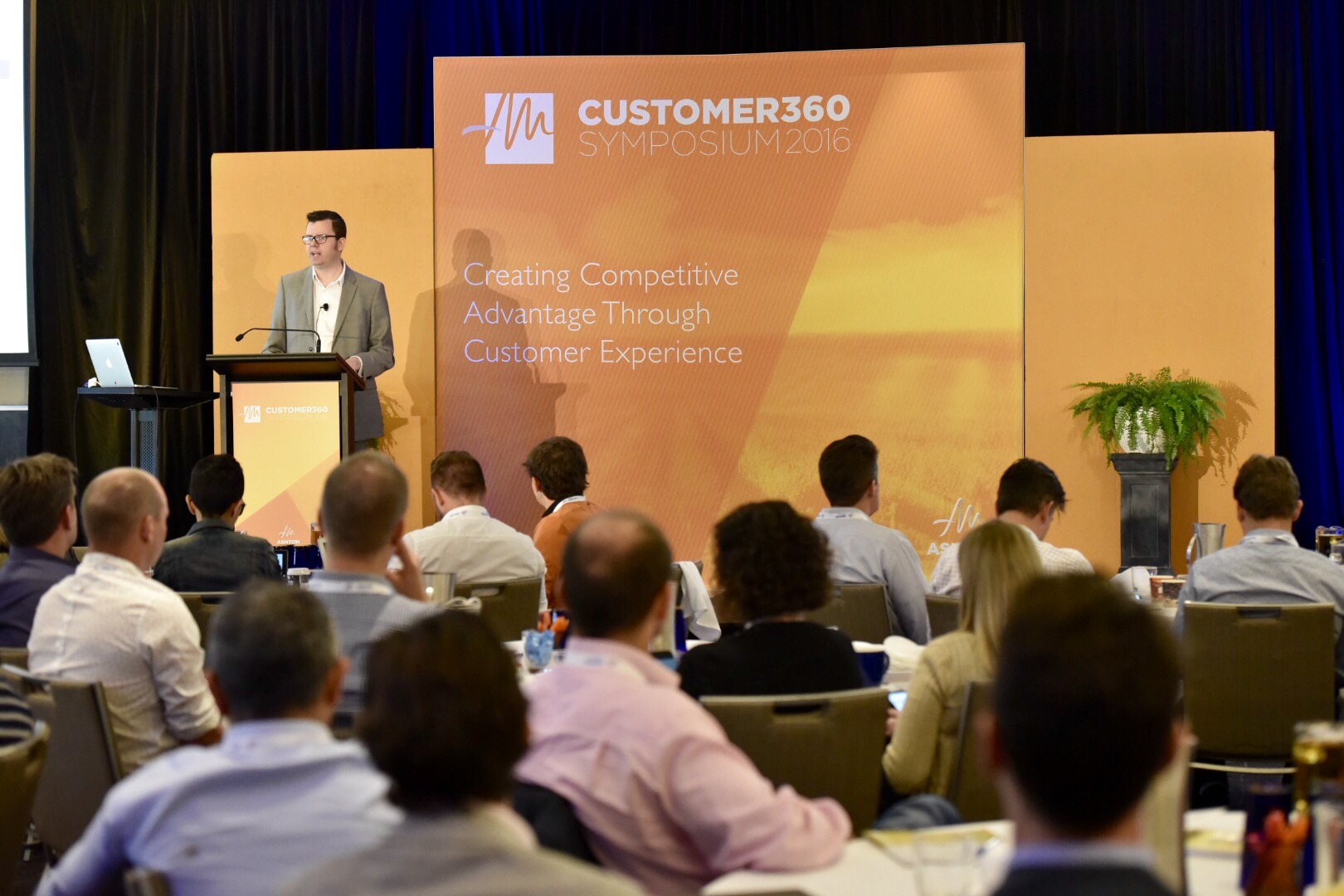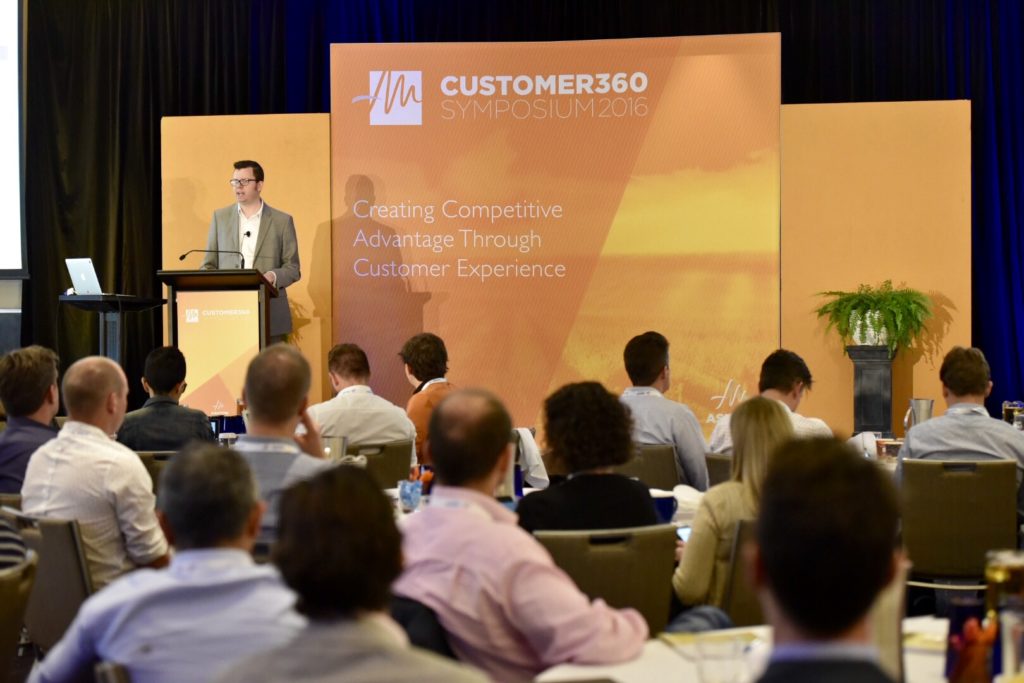
While plenty of people were tackling similar job functions, Grant Pattison was the first in the insurance industry to be labeled a marketing technologist, a role that seems a long way off his university studies of film and photography.
 According to Pattison, a marketing technologist acts as a bridge between marketing, sales and IT. Speaking at the Customer 360 Symposium he said: “Marketing traditionally hasn’t understood IT, and IT hasn’t traditionally understood marketing and sales, so the marketing technologist is an intermediary between those functions.”
According to Pattison, a marketing technologist acts as a bridge between marketing, sales and IT. Speaking at the Customer 360 Symposium he said: “Marketing traditionally hasn’t understood IT, and IT hasn’t traditionally understood marketing and sales, so the marketing technologist is an intermediary between those functions.”
Given his background, Pattison brings a unique take to the job. “I approached the role from a creative standpoint,” he said. “I have had to work quite hard to apply data and science to my creative background.”
The benefit of having a marketing technologist within your organisation, according to Pattison, is their ability to get stuff done. He said: “Every company is reasonably good at strategy however what differentiates a marketing technologist is their focus on delivery and execution. They have a bias to action and they know how to overcome hurdles to get stuff done. Today 83% of marketers say creating customer-centric propositions is a priority, however only 23% claim to be advanced in their implementation.”
Pattison sees the role as one with dual functionality. He says: “We are more than just techies, or consultants who aren’t truly accountable for delivery. We are dedicated professionals who are passionate about our business as we are about technology.”
Within the marketing technologist’s team, there is a diverse range of skills to draw on as they look after process re-engineering, advertising, social media, CRM, mobility, IT, entrepreneurship, web design and navigation of the digital world. Pattison said: “We love challenges. There is always another problem to solve, another innovation to implement.”
Bridging the gap
In the context of acting as the bridge between marketing, sales and IT, there are a number of use cases that come up for the marketing technologist from lead generation, to crisis management, data visualisation, customer service and investor relations. Marketing technology can enable different solutions for a range of use cases and objectives.
In the area of lead generation, Pattison said a marketing technologist may develop processes for linking content initiatives to the sales team. The example of crisis management is best demonstrated by broadcaster CNN’s sophisticated social media command centre “which means they can quickly get to where they need to,” a system a marketing technologist could implement.
Inside the marketing stack
In order to deliver in these areas, Pattison has access to IAG’s highly advanced tech stack. Within the stack, there is the data platform which houses customer insights, customer relationship management activities, policy and customer data and third party information which helps add value to the customer relationship. IAG uses Salesforce and Pattison said: “The data platform creates triggers and insights that can be plugged into your automation platform. We plug in all the customer journeys that we have and describe what channel we need to distribute our message to those customers through, whether it is email, SMS, or mobile push notifications.”
Pattison warns that a lot of companies leave a vital element out of the marketing stack – the marketing operations platform. He said: “Where are all your approvals and where is all your creative being stored? How are you auditing the performance of different campaigns? And is there a central location for all your third party agencies to upload their creative and approvals into?” IAG uses a platform called Simple HQ to handle all of this.
The icing on top is a decision and machine learning engine which Pattison explained takes all the insights from the campaigns IAG runs, “so when we run similar campaigns in the future we can make sure that they are being optimised”.
Of course, once your organisation has its core stack in place, you can start to bolt on additional services. Pattison said: “There are many more apps that you can put on here, but one of my favorites creates customer experience replays.”
The CX replay
At IAG, analysing customer interactions is something of an event. The brand runs “movie nights” which Pattison likened to call listening where the team watches high fidelity replays of customer sessions and experiences. Pattison said: “We glam it up a bit with popcorn and Choc Tops. It lightens the mood for what is otherwise, essentially, a steering committee where we use the movies to inform customer experience. There is action taken from those meetings based on what we actually see.”
But perhaps the most important question for marketing technologists is how they deliver ROI. Pattison said: “Once you’ve got your marketing technology stack established, you can start to take your observed, declared and inferred customer data and turn it into insight and personalisation opportunities which ultimately drives improved decisions and genuine engagement.”
About Grant Pattison - Senior Manager, Marketing & Sales Technology, IAG
Grant Pattison is responsible for establishing and driving the technology vision for marketing & sales across IAG Commercial, facilitating and delivering technology-enabled marketing and sales solutions that generate value outcomes for customers, partners and employees across brands such as CGU, NRMA, RACV, WFI & Swann Insurance. His role is accountable for the business ownership of Salesforce.com and its measured success achieved through the application of technical business processes to support sales account and pipeline management.
